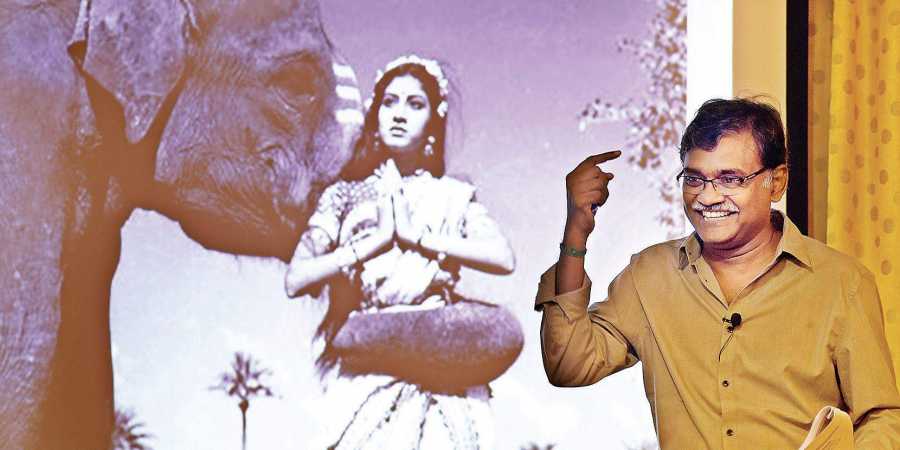The East India Company was a huge importer of elephants and ships would use elaborate pulley systems to transport these animals.

Chennai :
It seemed appropriate that there were Ganesha figurines and statues on shelves and tables at Airlift House in T Nagar, as the talk scheduled for the rainy evening was ‘The Giants of George Town’ by historian and author Venkatesh Ramakrishnan.
He explained that in Madras’ 500-year history that included the Portuguese settlement in Santhome, there was a steady flow of migrants and the elephants were no different. The city was a hub for the 5,000-kg animal with a constant inflow of herd from Coorg and Kongunaadu for the first 300 years.
The East India Company was a huge importer of elephants and ships would use elaborate pulley systems to transport these animals. “As Madras did not have a port for the first 150 years, boats would take the cargo and passengers to the ship from the shore. The elephants would be pushed off the boat and made to swim to the coast,” said Ramakrishnan.
Once a port was established, Madras began exporting elephants to various places, primarily the Andaman Islands. Fort St George has many references to the animals, with a gate in the L-shaped wall built to separate Black Town on Walltax Road called the Elephant Gate. The street opposite is called Elephants Gate Road. Following the British’s love for hunting, Madras was the first city to ban the hunting of elephants in the 18th Century.
The East India Company records show that elephants needed 600 pounds of grass daily. With the elephant, caretaker and grass-cutter costing `48 in total, double of what they cost in Bengal at the time. Ramakrishnan said an elephant in captivity was a metaphor for the control over India for the British, which explained the elephant motifs in records related to India from the EIC.
“Thirumullaivoyal has the first record of an elephant in Madras. A king was travelling on his elephant when it scratched its leg and a lingam was found where the blood flowed,” said Ramakrishnan, adding that the Madras Veterinary College is one of the few veterinary colleges in the world that offers a degree in elephant management.
During World War II, train carriages were in great need for the British Empire, who took all unnecessary bogeys and engines for their warranty efforts. This led to elephants leading the entire shunting business in Madras. “You were also permitted to transport your elephant, for a princely sum of `400. Ticket prices then were between `1 and 10, which made this all the more exorbitant,” said Ramakrishnan, adding that this was mostly used by the rulers of princely states.
Elephants have also featured in many Kollywood films. For the 1948 film Chandralekha, produced and directed by SS Vasan at Gemini Studios, two circuses stayed at their studio in Kodambakkam. “It was a common sight then to see elephants being taken for a walk in Kodambakkam. People would come to the studio to see the elephants,” said Ramakrishnan.
Notable facts
The city was a hub for the 5,000-kg animal with a constant inflow of herd from Coorg and Kongunadu for the first 300 years. The East India Company was a huge importer of elephants and ships would use elaborate pulley systems to transport them.
source: http://www.newindianexpress.com / The New Indian Express / Home> Cities> Chennai / by Rochana Mohan / Express News Service / October 08th, 2018